Popular toothpaste brands have been seemingly deceiving customers, bearing supposedly pretentious badges of safety and whatnot. As per a new US research, a long list of brands was tested for toxic metals. The results showed several brands deemed trustworthy are widely contaminated with dangerous heavy metals. This list has even red-flagged certain brands marked safe for children’s use.
Consumer advocacy group Lead Safe Mama’s latest toothpaste research centred around 51 brands indicated 90% of them were contaminated with lead, 65% had arsenic, just under 50% contained mercury and one-third had cadmium, according to the Guardian.
Tamara Rubin, Lead Safe Mama’s founder first discovered that these toxic ingredients were included in toothpaste about 12 years ago when she was working with families that had children with high-level metal contamination in their blood. Earthpaste was a common toothpaste brand that then incited distrust.
Calling the new revelations “unconscionable – especially in 2025,” Rubin said none of the companies dragged after the outcome admitted to working towards eliminating lead from their toothpastes. Some even sent her cease-and-desist letters, which she claims to have ignored. The Lead Safe Mama founder has since exposed them on her blog tamararubin.com.
Toothpaste brands with reported toxic contamination
The fear-inducing list included major brand names — not limited to the ones mentioned below:
- Crest
- Sensodyne
- Colgate
- Tom’s of Maine
- Dr Bronner’s
- Davids
- Dr Jen
- Dr Brite
Source of toothpaste lead contamination
Rubin’s research further made the case that the contamination appears in cases when certain ingredients – hydroxyapatite, calcium carbonate and bentonite clay – were included in the toothpaste mix. Of these three, hydroxyapatite allegedly aids teeth absorb calcium, calcium carbonate helps remove stains and bentonite clay is believed to serve it role as a cleaning agent.
Toothpastes with bentonite clay indicated the highest contamination levels. Those with the other two added individually showed troubling levels of lead (and other metals) contamination. On the flip side, children’s toothpastes – such as Dr Brown’s Baby Toothpaste – that did not have these ingredients did not contain the harmful metals, either.
How these have companies responded
Some of them have issued “dismissive” responses, defended their decisions to include lead in toothpastes. Dr Jeni’s responded to the lead-positive findings by sharing a graph visual with Lead Safe Mama. The noted, “To provide clarity, we have included a comparison chat below illustrating the FDA safety limits for heavy metals in toothpaste versus the actual concentrations found in Dr Jen’s Strawberry Toothpaste.”
“As you can see, the levels of these substances in our toothpaste are significantly below the FDA’s safety thresholds for oral care products. It’s important to note that safety standard vary based on the type of product and its intended use. Toothpaste safety limits are set considering ingestion risks specific to dental products, not food.”
Rubin shared her drafted response to these claims in February, noting, “The safety limits are outdated and not protective of human health. All federal agencies agree that there is no safe level of Lead exposure for human beings, & especially for children.”
Detailing the detrimental impact of lead ingestion, she added, “When Lead is ingested or inhaled those are the most dangerous pathways for exposure. Comparing your levels to an outdated standard that is not protective of human health and was set as a benchmark to protect industry is not appropriate.”
“I expected more from you. I assumed your product would not have harmful toxicants that could impact my children. That’s why I chose your brand. #KnowBetterDoBetter. Your response is dismissive and not reflective of current scientific understanding of the toxicity of Lead, especially Lead exposure that happens daily, multiple times a day – via oral pathways. Now that you know better, please do better. Please clean up your products.”
In a follow-up comment she wrote, “Plus – Doh! This chart shows the toxicity standard for fluoride toothpaste and we tested their non-fluoride toothpaste product – the toxicity standard for non-fluoride toothpaste is half of what they show (& yes – still too high).”
Levels of toxins detected in toothpaste brands
According to the Guardian, the highest levels found in the toothpaste brands crossed the limit set by the state of Washington, but not federal limits. On the other hand, the official Centres for Disease Control and Prevention website states that no level of lead exposure is sage.
Though not including toothpaste, California’s lead limit in baby food is six ppb. Stuck in Congress, the federal Baby Food Safety Act of 2024 pushes for lead limits in kids’ food of 10 ppb. Yet, most toothpastes named in Lead Safe Mama’s report surpass those thresholds.






